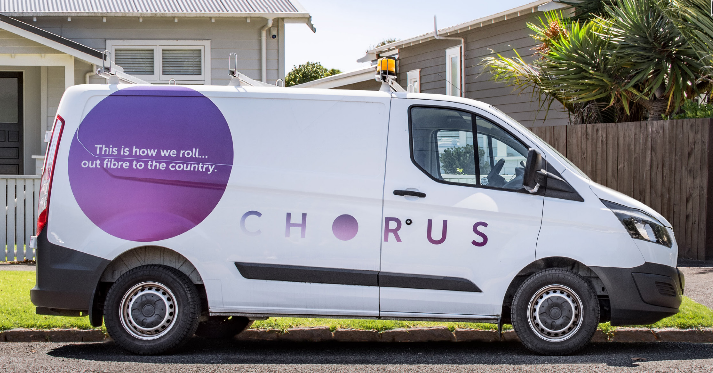
New Zealand broadband wholesaler Chorus said it now has 143,000 users on 1Gbps connections, after uptake grew by 7,000 connections during the third quarter.
For the three months to the end of March, the company added 29,000 customers across all fibre connections, and said the average monthly data use of fibre increased from 460GB to 491GB.
Overall, Chorus saw its amount of broadband connections decline by 2,000 to 1.181 million, with the company blaming it on COVID-19 and the impact it had on network migration and population growth, which it said led to broadband growth being constrained. This, however, was counterbalanced by the return of students from holidays, which Chorus said helped restore some prior period disconnections.
In terms of data usage, monthly data use grew slightly from 390GB recorded last quarter to 416GB in March. Broken down, it was 241GB for copper-based connections and 491GB for those on fibre.
Chorus also reported total fixed line connections continued to decline, reaching 1.356 million after losing 13,000 connections during the third quarter. Similarly, copper broadband and voice connections also dropped by 42,000.
On Wednesday, New Zealand’s competition watchdog Commerce Commission (ComCom) released its 2021 summer edition of its Measuring Broadband New Zealand report [PDF] that showed the performance of Fibre Max plans have improved substantially.
The report shows the average download speed of Fibre Max plans has increased by more than 200 Mbps, or 35%, to around 840Mbps. It attributed the improvement to network changes that were made by local wholesalers and retailers towards the end of last year. When the changes to network configurations were made, Fibre Max speeds reached around 940Mbps based on tests carried out by SamKnows.
“Overall performance is now in line with advertised speeds. There is no noticeable dip in performance during peak hours and performance differences across the country have been smoothed,” said Telecommunications Commissioner Tristan Gilbertson.
Fixed wireless technology, however, continues to experience “significant” latency, the report showed.
“While 4G fixed wireless can offer higher download speeds than copper broadband, it is not comparable to fibre in its performance in real-time applications. Higher latency can have a real impact on consumers who use the internet for video calling, online gaming and watching high-definition video,” Gilberton said.
Meanwhile, 2degrees has announced it has selected Ericsson to help build its 5G network at 700 sites, with build set to begin in Auckland and Wellington.
The partnership comes after New Zealand banned the use of 5G equipment from 2degrees’s longstanding partner Huawei.
Off the back of the ban, Huawei New Zealand saw revenue dip nearly NZ$200 million year on year to NZ$111 million for the period ending 31 December 2020, as reported by New Zealand Reseller News.
Huawei also fell into the red by NZ$713,424, down from net profit of NZ$4.9 million in 2019.























